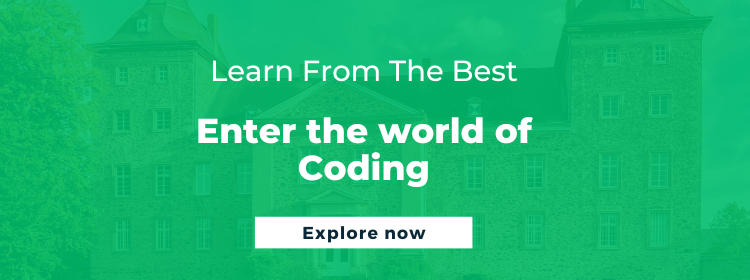What is Full Stack Development? The Ultimate 2023 Guide

- What is full-stack development?
- Front-end vs Back-end vs. Full-Stack Web Developers
- What does a full-stack developer do?
- What skills does a full-stack developer need?
- What are the different types of full-stack developers?
- Career outlook for full-stack developers
- How much do full-stack developers make?
“Hiring software engineers with specialization in Python” is definitely a hiring requirement from the past. Gone are the days when software jobs had simple job descriptions. Just as software applications have become layered, the requirement for developers or coders is also a complex mix of skills. And if you have been sifting through the hiring pages on LinkedIn in this category, then the term ‘full-stack developer’ must have crossed your screen. But, what is full-stack development and how is it different from other software development? We’re here to answer all the questions you might have regarding a career in this field.
What is full-stack development?
Before we give a conclusive answer to the question, ‘what is full-stack development’, let’s understand what web development comprises.
Any kind of software application comprises three distinct components:
- Front-end Layer: It is the user-facing part of the application that takes into account User Experience (UX) and User Interface (UI). It includes coding languages such as HTML, CSS, and JavaScript.
- Back-end Layer: These are parts of the application that the user doesn’t see or interact with. However, they are integral to running the application. It includes languages and frameworks such as Node, Flask, C++, Java, and Django.
- Database Layer: This is the layer of the application that stores all the data for its running like user information, user requests etc. It includes mostly Structured Query Languages (SQLs).
A full-stack developer is someone who has knowledge of all these three areas of development and can work with them. Mind you, a full-stack developer is not an expert in all these three areas. However, they have a basic understanding of all three components and hence, they can supervise or collaborate across a range of projects. For more details about full-stack development, click here.
Front-end vs Back-end vs. Full-Stack Web Developers
 The distinction between front-end, back-end, and full-stack developers becomes easy to understand when we put it in context. The difference between these is as follows:
The distinction between front-end, back-end, and full-stack developers becomes easy to understand when we put it in context. The difference between these is as follows:
- Front-end Developer: is a professional who specializes in designing and developing the front-end of a website or web application. This would require knowledge of HTML, CSS, and JavaScript. It would also require a sound understanding of UX and UI.
- Back-end Developer: is a professional who works with the coding and development of the back-end or business side of a website or application. This requires in-depth knowledge of Node, Flask, C++, Java, and Django.
- Full-stack Developer: is a professional who has knowledge of both front-end and back-end development as well as database languages and frameworks. In summary, a full-stack developer can work on a website or application from end-to-end.
What does a full-stack developer do?
Now that we have an understanding of ‘what is full-stack development’, the logical next step is to know what they do. Why should a company hire a full-stack developer? To set the context, the role of a full-stack developer is not a regular coding job. It requires experience and knowledge of many different programming languages, frameworks, and technologies. Hence, the more senior roles are usually reserved for full-stack developers.
The role of a full-stack developer would include the following:
- Code the more complex programs for all three layers of the website or application.
- Troubleshoot any problems in the different layers of the application or website.
- Coordinate the process of developing a website/application with front-end, backend, and database developers.
- Set up rigorous testing formats for applications/programs to have a handle on quality.
- Addressing database queries and debugging, when necessary.
- Laying out the roadmap for the future needs of the application/website
What skills does a full-stack developer need?
Skills have a very pertinent role to play in a full-stack developer’s career. By the very definition of their profile, they are expected to have a wide range of technical skills. While they may not be a master of all these technical skills, they must have working knowledge of the following:
1. HTML
Used primarily in developing interactive web applications, HTML is the backbone of front-end operations. Hence, it is a must-have skill in a full-stack developer’s kitty.
2. CSS
Cascading Style Sheets (CSS) is essentially the digital equivalent of a style sheet that is used to set the look and feel of a website.
3. JavaScript
JavaScript, which is a programming language, is another basic requirement for full-stack developers. This programming language is essential for all dynamic features of a website or application.
4. DOM Manipulation
Document Object Model (DOM) Manipulation is an Application Processing Interface (API) for HTML and XML. It stores the documents with HTML and XML extensions in the database.
5. SQL/NoSQL
SQL and NoSQL is an essential part of any full-stack developer’s skill set because it is one of the most optimum ways to sift through data in the database layer.
6. Java
Java is a programming language that stands as a cornerstone of any modern website or application. Without Java, a developer cannot manage backend operations.
7. Object-Oriented Programming
Object-Oriented Programming (OOP) is the process of arranging data around objects or concepts instead of functions and logic. It makes navigation easier and improves UX.
What are the different types of full-stack developers?
In response to ‘what is full-stack development’, we understood that it involves working knowledge of all three layers of a website or application: front-end, back-end, and database. However, there are other lenses through which we can look at full-stack development too; different stacks, for example.
A stack is essentially a collection of technologies that go into the three different layers of the website or application. While the layers remain the same, different technologies can be used for each. For instance, MERN is a combination of MongoDB, Express, React, and Node. Different full-stack developers specialize in different (can be more than one) stacks.
The following are some of the popular stacks that full-stack developers specialize in:
- MEAN Stack
- MERN Stack
- LAMP Stack
- LEMP Stack
- Full-stack Elixor
- Full-stack Python
- Full-stack Java
- Full-stack Django
You can read more about these stacks and how they impact the employability of a developer, here.
Career outlook for full-stack developers
According to Full Stack Techies, a full-stack engineer’s job was among the top 5 emerging jobs listed in 2020. There were 26.8 million software developers globally in 2021, which was expected to rise further in 2022-23. Also, as per the State of the Developer Nation report, developers are expected to grow to 45 million by 2030.
How much do full-stack developers make?
Apart from the growth opportunities mentioned above, a comfortable pay package also draws many young developers to full-stack development. The average salary of a full-stack developer in the US is $100,645 per annum as per Indeed.com. This amount is subject to change based on seniority, skills, size of company, and location, among other factors.
The quickest and most enduring path to know what is full-stack development is to study for it. Emeritus has a whole range of coding courses that can help you on your way to becoming a full-stack developer. You can explore these courses that are tailor-made for different levels of experience and specializations to add value to your profile.
By Anwesha Barari
For content collaborations and feedback, write to us at content@emeritus.org














